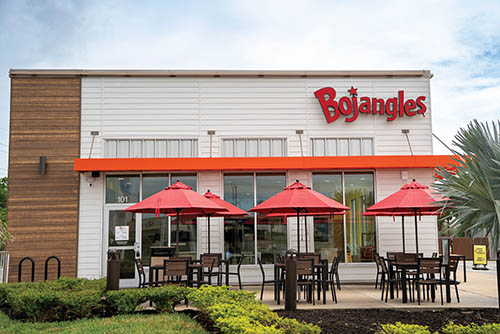— By Jim Cannon —
Location design and its impact on operations, franchisee success and guest experience.
Restaurant design plays a critical role in the success of any QSR brand. From streamlining operations and supporting menu execution to shaping the guest journey, every design decision has a direct impact on restaurant performance.

At Bojangles, our approach to location design evolves as we continue to grow as a brand. And, with nearly five decades of experience behind us, evolving with changing consumer, operations, menu, financial and technology trends is something Bojangles does well. Known for our craveable Southern flavors and charming hospitality, we’ve been serving guests since 1977 and now operate more than 800 restaurants across 20 states. Over those years, we’ve stayed committed to honing our restaurant design strategy to align with best-in-practice updates. Our primary focus remains the impact of restaurant design on operations, franchisee success and the overall guest experience.
Every aspect of the restaurant environment is a result of strategic design strategy. We exhaust every possibility to plan for the customer journey, enhance the guest experience, ensure operational success, evaluate what happens behind the scenes, support franchisees and prepare for the future with tech-driven innovation.
Top Priority: The Customer Journey
For us, designing for the customer journey starts with the core principle that operational flow must align with guest expectations. To match those expectations, we consider how customers want to interact with our restaurants and what will make them happy. We start by creating experiences that feel familiar. When guests walk into their local Bojangles or pull into our drive-thru, they should experience a shop design that is intuitive. The thought behind that design is as simple as ensuring customers can hear the drive-thru speaker easily and can read the menu clearly. Every detail is intentional — we want to be as accommodative as possible, while also making the experience quick and efficient.
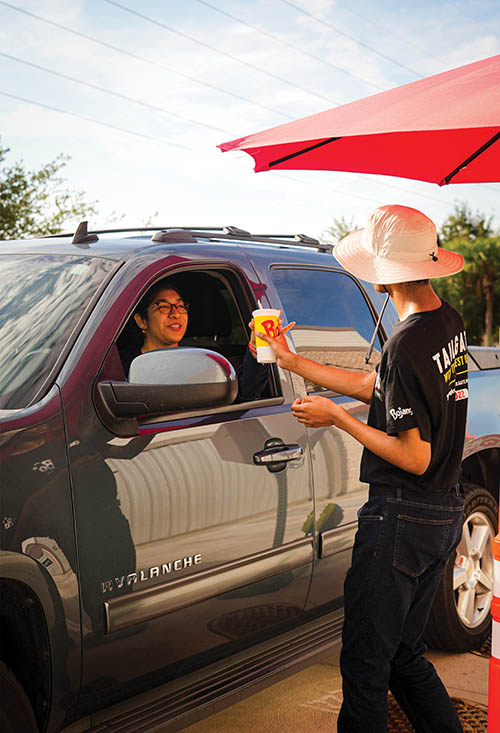
Following the COVID-19 pandemic, we’ve seen a significant uptick in digital and drive-thru usage, which emphasized the importance of remaining flexible to consumers’ ever-evolving patterns and preferences. Amid increasing off-premise dining consumer preferences, we’re always thinking about how much dine-in space is necessary at each location, balancing real estate considerations with shifting consumer priorities.
Our strong breakfast business also adds another layer to design planning. At Bojangles, our team must consider the transition from breakfast to lunch through thoughtful design to ensure a seamless shift without disrupting speed, quality or the guest experience. With this in mind, taking the guest experience to the next level starts with flexibility and an understanding of each community’s priorities. In established markets, guests tend to expect a traditional restaurant experience, which we accommodate for with ample seating and dine-in space. On the other hand, in newer markets, we see a greater amount of digital and delivery sales. To adapt, we want to ensure there’s not only seamless processes for guests, but also delivery drivers — where convenience is key. Third-party delivery drivers need to avoid slow lines and pick up orders quickly, while maintaining food quality. To support this, we’ve begun looking into delivery-friendly features, such as dedicated parking spots and an exterior locker system to streamline pickups.
Team Member Flow
While the guest experience is front and center, what occurs behind the scenes is equally important. Our restaurant design is built to support employee operational flow, starting with workstation positioning and aligning every element with our labor systems.
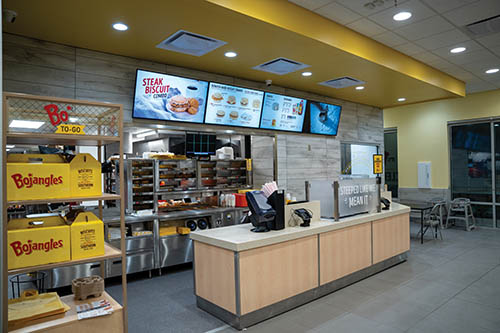
To optimize performance and to truly understand our labor flow, we partner with a third-party company that conducts in-depth restaurant design studies across multiple locations. Their purpose is to analyze employee worktime, travel times and idle times. This research examines everything from whether employees start each motion on time and what would be keeping them from doing so, to recipe execution. We consider every detail, including where ingredients are stored, whether that’s dry or cold storage, thawing times and food holding requirements.
The goal isn’t to simplify or alter the menu we already love and cherish. We want to ensure each item can be made in the most efficient way, to deliver the quality and flavor our guests expect.
Franchisee Mindset

Just as we design for guest needs, we also tailor our approach to support franchisees — one being market-specific adaptations. Depending on the neighborhood, one franchisee may ask for minimal dine-in space to accommodate a more digitally driven consumer base, while another in a rural community may prefer to have as much dine-in space as possible. Technology preferences tend to have the most variation across franchise locations, due to those differing community needs.
Franchisees also frequently evaluate their design needs based on operational efficiency. Key aspects include the number of drive-thru menu points and the number of windows. In many cases, we’re asked how to do more with a smaller building, especially when converting from an existing building.
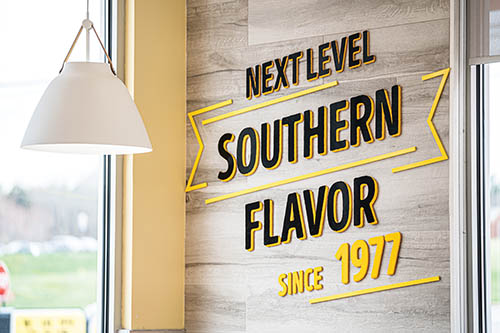
Ultimately, each building requires its own design strategy to make everything work with as little friction as possible. Space is a premium — every square foot counts. And most importantly, when you give a seasoned operator a shelf, they will fill it. Our role is to ensure each element of design provides the foundation for the long term success of our franchisees.
Tech-Driven Approach
As we look to the future, AI and technology integration is at the forefront of restaurant design and innovation. These tools don’t just support operations, they redefine them. For example, AI-powered ordering systems eliminate the uncertainty of when an employee starts a task or how long it will take. Instead, AI ordering systems can place and begin an order simultaneously, streamlining services and reducing guest wait times.
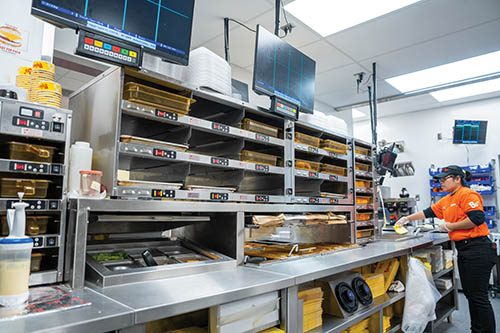
At Bojangles, we’re embracing this shift through the rollout of Bo-Linda™, our drive-thru AI platform that is now operating in over 377 locations, with an additional 100 in various stages of installation. Many units are also bilingual, capable of interacting with guests in both English and Spanish. This system is a dynamic conversational drive-thru AI platform to augment human interaction with digital restaurant systems. It handles orders autonomously, but also allows team members to interject when needed, ensuring both speed and accuracy. It’s also able to adjust its intelligence based on those interjections to improve the overall guest experience. As we continue to expand, one of our main focal points remains on how technology implementation can improve our systems and processes for employees and align with consumer needs and expectations.
At the heart of restaurant design is a careful balance — one that considers the needs of guests, employees and franchisees through a holistic, research-driven approach. No two locations are the same, and we approach each restaurant differently based on the varying needs.
Design is not just a part of the process, it’s foundational to how we grow by laying the groundwork for success. Ultimately, great restaurant design supports more than just the business. It creates a space where guests feel understood and welcomed, employees feel supported and franchisees are set up to thrive. That’s what drives our work every day.
— Jim Cannon is chief development officer of Bojangles.

